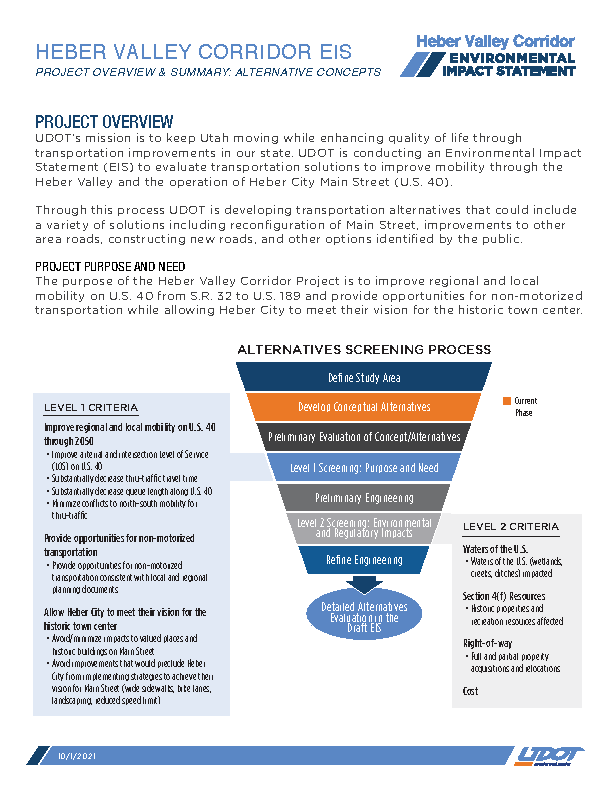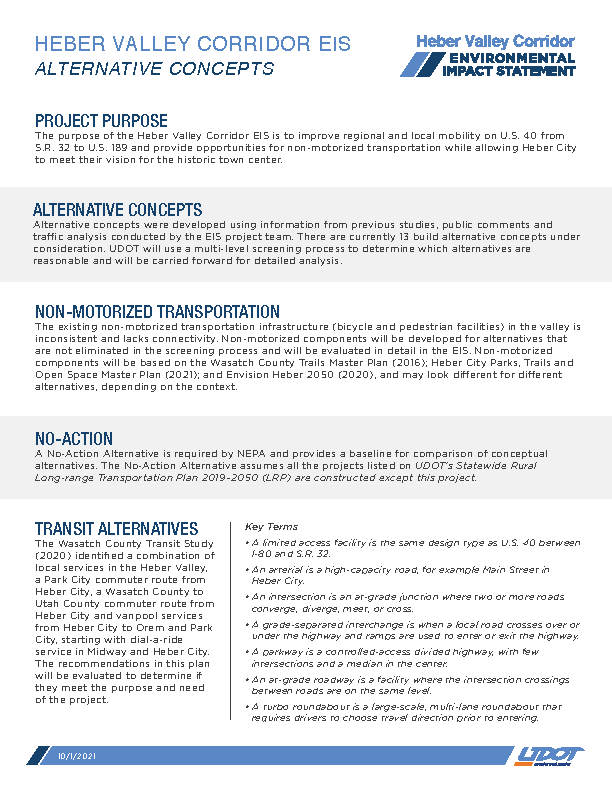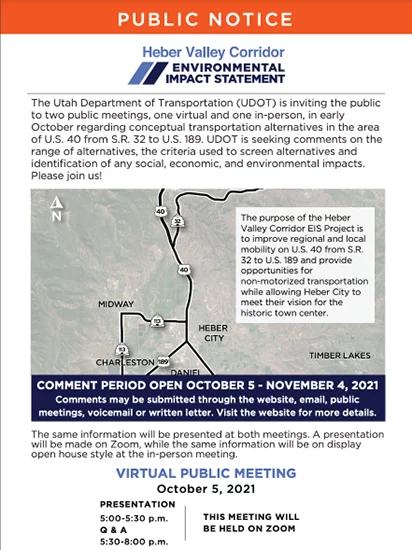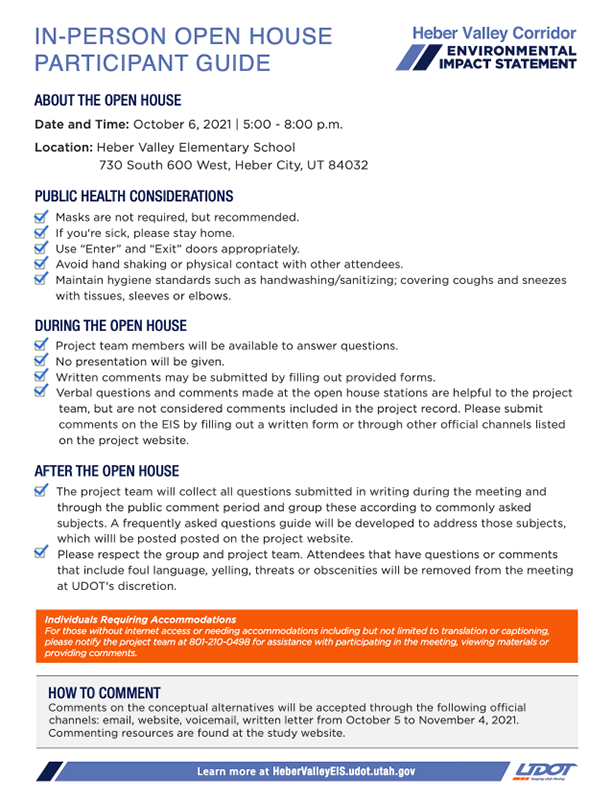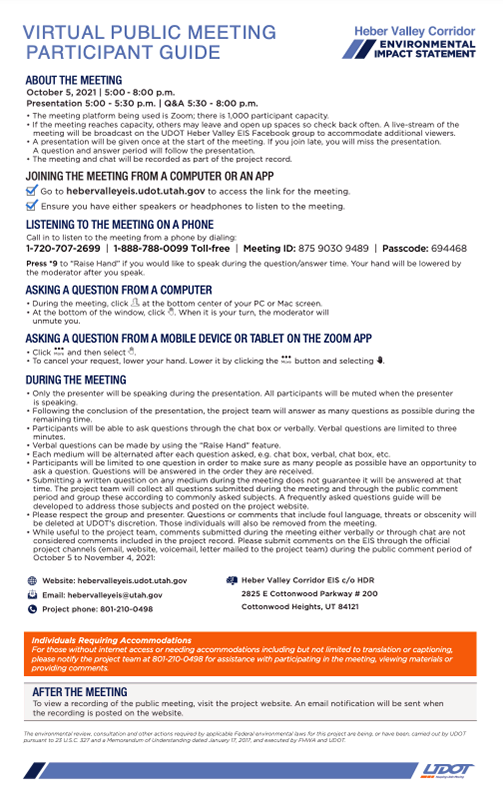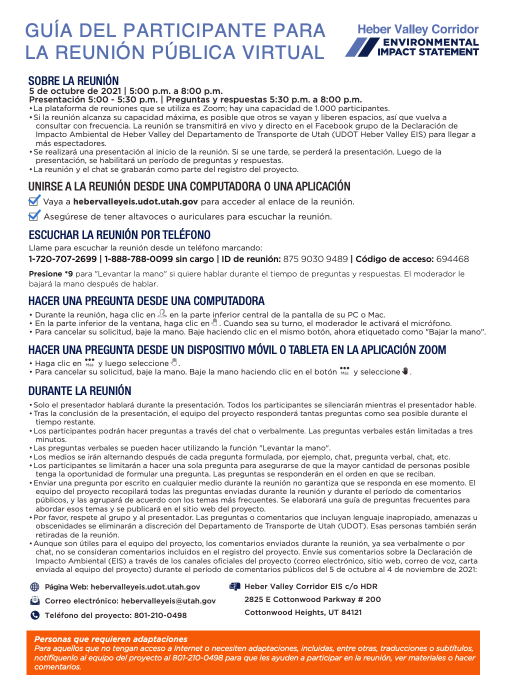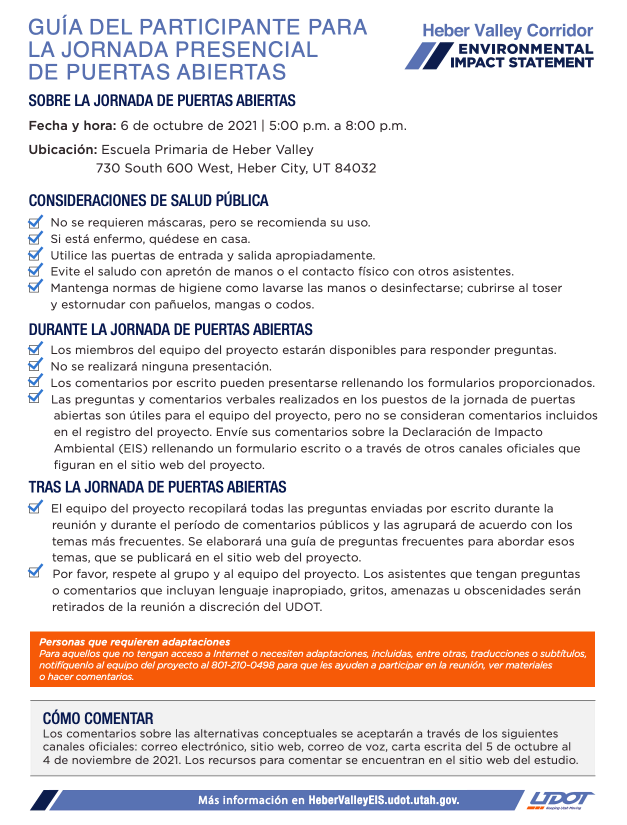ALTERNATIVE CONCEPTS
UDOT identified 17 initial alternative concepts for consideration in the EIS, which included one transit concept, six US-40 concepts, three east bypass concepts, and four west bypass concepts. Three of the west bypass concepts had an option to realign US-189. Alternative concepts were developed using information from previous studies, public comments and traffic analysis conducted by the EIS project team. These alternative concepts were evaluated in a multi-level screening process to determine which alternatives will be carried forward for detailed environmental analysis.
Alternative concepts were developed using information from previous studies, public comments and traffic analysis conducted by the EIS project team. These alternative concepts were evaluated in a multi-level screening process to determine which alternatives will be carried forward for detailed environmental analysis.
A public comment period was held from October 5 to November 4, 2021 to receive input on the range of alternatives, the criteria used to screen or eliminate alternatives, and identification of any social, economic, and environmental impacts.
Alternative Concepts Presentation
Oct. 5, 2021 presentation recording
Alternative Concepts Fact Sheets
Alternative Concepts Scroll Plots
Scroll plots are large scale maps showing the location of the concepts and resources such as wetlands, parks and potential historic properties.
Alternative Concepts Boards
Boards detail information on the alternative concepts, including roadway typical sections.


